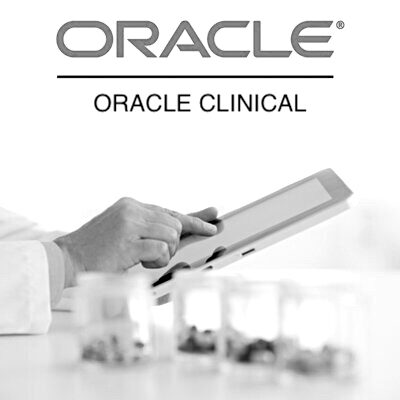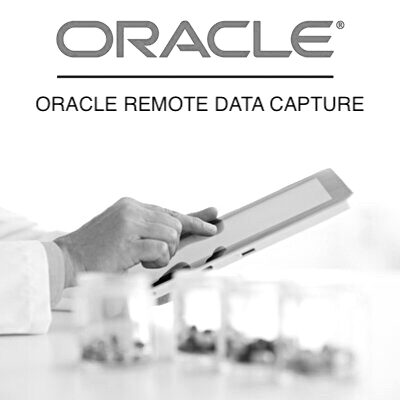Table of Contents
Introduction to Clinical Data Management Systems (CDMS)
In this article we shall discuss about the overview of clinical data management systems, their origin, definition of a CDMS and its components. This will give you a broad understanding about the use of Clinical data management systems in the collection and management of raw clinical data.
Overview of CDMS
It is clear that a PC-based system that could validate the data immediately would bring dramatic reductions in both cost and time, and it doesn’t seem that it would be difficult to create such a system. However, everything in the pharmaceutical industry is harder than it looks. In addition to the front-end system, a back-end system called the clinical data management system is needed to collect all the data and perform further processing, such as looking up “Appendix removed” in a medical dictionary and turning it into the standard term “Appendectomy.”
Every data transmission from the front end to the back end needs to be audited, and any differences in data values between the two systems need to be identified and resolved. If a new field needs to be added to the form, that change needs to be broadcast to maybe thousands of PCs. These operational challenges mean that attempts to collect clinical data using stand-alone PCs have failed to show any significant benefits in cost, quality, or time, even after 10 years of trying. Fortunately using Clinical data management systems is the new approach that looks much more promising.
Using the clinical data management systems, pharmaceutical companies can now provide data-entry and query-management dynamically against the same back-end system that is performing all the complex checks, handling the medical dictionaries, and loading data (including lab data) that are collected electronically.
This architecture, made possible by huge centralized databases coupled to friendly front-end interfaces on the Web, eliminates intermediate copies of the study definition and of the patient data and thus realizes the benefits of immediate data collection and validation without the historical overhead.
Although there are still a number of challenging issues to address, including security, telecommunications infrastructure, and the ever-present regulations on managing electronic signatures for the electronic data, it looks as if the industry is finally set to quit using paper as the primary medium for data collection and storage.
Software vendors such as Oracle (Oracle Clinical) and Phase Forward (Clintrial) are among the few that now provide secure end-to-end solutions reaching from the physician’s office at the front end to a clinical trials system at the back end, enabling clinical data to be collected securely and efficiently. These efficiency savings will allow patients to benefit from new drugs more quickly; they will also allow a quicker return on R&D investment by the pharmaceutical company, thereby leading to lower costs.
Origin of CDMS
The ultimate goal of any clinical trial is to generate accurate data on an investigational drug in a timely fashion. It is this data that is statistically analyzed to obtain information that has to be submitted to the regulatory authorities. If this data is not clean or inaccurate, the very reason of a clinical trial is defeated.
Until now the data was collected on paper. Since this data was manually entered the chances of errors were quite high and thus additional resources had to be deployed to maintain quality. This not only led to an increase in cost but also a longer duration for the data to be deemed fit for analysis. Unfortunately time is money in the pharmaceutical industry. Not only this but also the management of the data on paper was tedious, costly, uncertain and difficult to be analyzed.
All these factors coupled with the development in the field of Information Technology has led to movement of the process of this clinical trial data management from paper based methods to clinical data management systems.
Definition of CDMS
A Clinical Data Management System (CDMS) is a standardized, 21 CFR Part 11 compliant, validated database management system specifically designed for managing all aspects of a clinical trial including clinical study planning, preparation, performance and reporting.
Components of a CDMS
A typical Clinical Data Management system is nothing but a relational database having features/tools that facilitate the management of study design and data acquisition to streamline clinical trials. The backend programs used to write these features/tools may be different for various CDMS developed and marketed by different vendors. Taking an example of Oracle Clinical, the most widely used CDMS, it has the following features:
- A Global Library of reusable objects that permits the fast construction of new clinical studies to exact specifications
- A comprehensive set of tools for capturing the components of the clinical trial protocol in multiple iterations of detail and developmental versions
- A flexible way of structuring the questions that appear on Case Report Forms (CRFs) into database entities called data collection modules (DCMs)
- Automated procedures for generating and customizing data entry windows (forms) that correspond to the CRFs
- Definition of complex data validations and derivations that requires little or no programming
- A discrepancy database automatically synchronized with changes to both the clinical trial data and the validation definitions
- A flexible internal data structure for holding the clinical trial data that provides the ability to reorganize data for extract
- Maintenance of lab reference ranges across multiple studies
Uses of a CDMS
The functionality of a Clinical data management system (CDMS) encompasses managing clinical trial data such as documentation (protocols, CRFs, DCFs), patient recruitment and enrollment, investigator relationship management (IRM), monitoring and reporting.
A clinical data management system may offer a subset of these functionalities or might deliver a full spectrum of integrated modules including the following;
- Investigator relationship management (IRM)
- Investigator and site identification and recruitment
- Site management (grant payment management, financial disclosure, monitoring enrollment relative to plan and IRB approval and decision status)
- Protocol and study documentation preparation.
- Case Report Form (CRF) development and electronic data capture (EDC).
- Clinical Data Management including CRF planning and distribution (whether electronic or paper)
- Financial management including tracking study costs, reimbursing investigators, and paying claim related to study activities
- Clinical supply management including supply tracking, storage and shipment
- Clinical data archiving/warehousing and management
- Data analysis
- Monitoring and reporting
- Adverse event (AE) reporting, tracking and documentation
Though some products may offer a subset of these modules rather than all of them but by IDC (International Data Corporation) definition a CDMS should deliver solutions spanning the clinical trial planning and performance time line, specifically providing functionality in four or more of the functional areas defined above.
A clinical data management system managing the above spectrum of information must be compliant with the FDA’s 21 CFR Part 11 regulation in order to ensure that protocols, investigator brochures, CRFs, CTM information and clinical data remains attributable, traceable and controlled. This assurance is provided in a CDMS by underlying content management systems (CMSs) that are Part 11 compliant, but they must be coupled with adequate training and documentation of the entire system’s configuration and stability.
In addition to this a CDMS must incorporate a role-based security at the enterprise level that meets 21 CFR Part 11 and HIPAA guidelines.
The CDISC standard was developed by the Clinical Data Interchange Standards Consortium. It provides data interchange standards to support the clinical trial industry. While CDISC compatibility is only beginning to be a feature of some CDMS, its importance is increasingly growing.
The management of electronic documents associated with a trial and compatibility with the document management systems, is key to clinical data management systems.
Advantages of CDMS over Legacy Systems
Legacy systems have existed as an intermediary between paper based methods and clinical data management systems. There have certainly been several strengths of legacy systems such as performance, dependability, constant addition of functionality and interfaces over the years, very fast study setup with an average of 1 week and being user friendly. However CDMS implementation was essential due to certain unacceptable weaknesses of legacy systems. For example legacy systems could not provide long-term support for underlying software and had steep operating and support costs.
Thus legacy systems are rated as being too costly and risky for long term use. Moreover the availability of original system experts slowly reduced. The 21 CFR Part 11 compliance and CDISC standard are few major factors which have resulted in the drift towards using CDMS and the replacement of Legacy systems such as Winchester business systems. Even SAS Drug Development is categorized as a legacy system due to its historical positioning in the data analysis portion of clinical data management.
CDMS Vendors
Clinical Data Management systems may be of three types:
- In-House CDMS: These are systems that have been designed in-house. The advantages of these systems are that they can be modified as per need as the backend programming has been done in-house. Similarly additional modules can be loaded as a part of the CDMS which is not possible for vendor software’s like Oracle Clinical. However there are issues with using in-house systems until they have been validated against 21 CFR Part 11 guidelines.
- Vendor Systems: These are CDMS which have been designed by a third party/ company specifically to be licensed/sold to the industry players. They have been validated and incorporate the regulatory guidelines and some of them have come to become the industry standards for example Oracle Clinical and Clintrial. These systems are however inflexible as far as adding new components/modules is concerned which is because of the fact that they have been validated and tested against a specific set of modules only.
- Open Source CDMS: By far there is only one open source CDMS available in the market today named OpenClinica. It is 21CFR Part 11 compliant and supports HIPAA guidelines. Though this CDMS is free of cost as well as widely accepted yet it is not widely used due being open source which opens up issues of security, data confidentiality and reliability.
The various clinical data management systems available in the market today are;
- Oracle Clinical
- Phase Forward
- Siebel Clinical
- eResearch Technology
- Paraxel / Perceptive Informatics
- MediData
- NexTrials
- SAS Drug Development
- ClinSource
Oracle Clinical is the de-facto standard for clinical data management used by most Fortune 500 companies and Contract Research Organisations. It allows for the collection and management of clinical study data in multiple iterations of detail and process that data to ensure completeness and consistency in the shorted possible timeframe.
For a deep insight into the world of Clinical Data Management, subscribe to our Clinical Data Management Knowledgebase
Want a explore a career in Clinical Data Management? Join our Diploma in Clinical Data Management program and kick-start a career in Clinical Data Management and Oracle Clinical.
Already completed a program in clinical data management. Enhance your expertise on the Oracle Clinical software by pursuing our Oracle Clinical Fundamentals program. You can also subscribe for 24×7 access to the Oracle Clinical software for practice.




